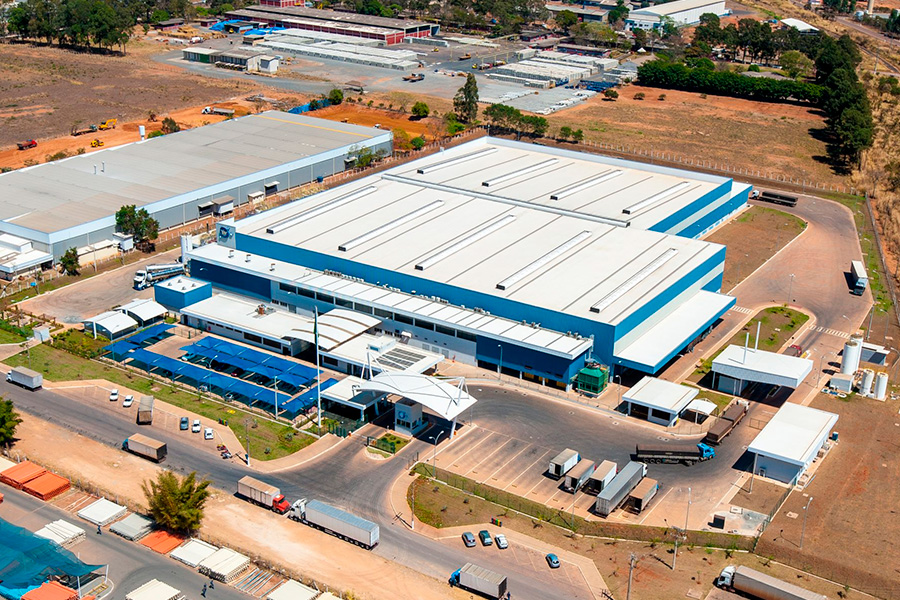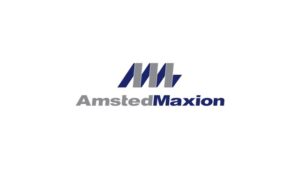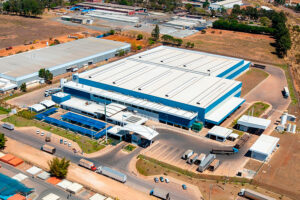Chemical company Amparo, owner of the Ypê brand, adopts Softrack’s telemetry system for its Fleet assets. Cost reduction and operational visibility are just some of the benefits. The current trend is to integrate the tool’s data into the industry’s corporate platform.
Management. One of the most used words in the corporate world and one of the concepts that organizations are most seeking to put into practice in order to optimize operations and maximize results. Often seen as a synonym for control, well-applied management, more than reducing costs and improving productivity, provides a broad view of the business, with its bottlenecks, points of attention, efficiency, and, why not, opportunities.
With this in mind, Química Amparo, owner of the Ypê brand, began a project five years ago to implement telematics in fleet assets. The initial step, taken at the end of 2014, with Softrack selected as the company to analyze the demands, identify the opportunities, and develop the project, covered the entire fleet of machines at the time, a total of 140 own equipment, including electric and combustion forklifts and tuggers.
According to Softrack’s Commercial Manager, Mário Bavaresco Neto, the idea was, through solutions developed by Softrack—both hardware and software—implemented in the machines and made available on a portal, to provide Ypê with a management system for these equipments. “This would bring security, maintenance control, and effective use of assets, as well as increased productivity for both operators and machines,” says.
The executive emphasizes that it is a complete machine fleet management system and the implementation cost for Softrack is very simple. “It is an investment that should return in savings in many ways, both direct and indirect, with safety and all the labor issues involved, and with the machine’s own operation,” he summarizes.
Neto, Commercial Manager,
Ypê immediately identified the opportunities that would be generated in its five plants – Amparo (SP), Softrack Salto (SP), Simões Filho (BA), Anápolis (GO), and Goiânia –” says Ezequias Blogoslawski, Asset Coordinator at Química Amparo. “Telemetry takes a moving equipment and makes it static on a screen. With this important tool, we can identify and treat anomalies immediately before they pose greater risks to the operation. “We make the equipment more reliable,” he emphasizes. He adds that the project with Softrack would allow the interaction of technology with the company’s equipment, garner support from managers, and provide better visibility of costs.
The action would be a significant change in Ypê’s daily operations.This is because before the telemetry project, asset monitoring was done through manual checklists. “We worked a lot on the corrective, we analyzed the failures looking only to the past, without the condition of analyzing looking forward,” recognizes Blogoslawski.
Pre-analysis
Once the functionalities of telemetry and the competitive advantages it would bring were demonstrated, the companies signed a three-year contract and actually started the project in early 2015. The first step was to offer a trial. Neto explains.“We installed our equipment on two machines operating in Amparo because all the company’s development activities take place at this plant, being the company’s headquarters,” he says. In total, there were two physical modules installed: one adapted to the machine that allows the driver to interact with the system (perform identification and checklist), called the operator’s panel, and another located near the engine responsible for collecting and transmitting data via the internet to the cloud, which can be accessed through a portal.
The tests lasted two months and indicated that there was significant potential for Ypê to better manage its fleet. The Softrack manager states that it was practically demonstrated how the equipment operated, presenting the results and projecting an analysis of the benefits that the company would obtain. “We were able to demonstrate that the equipment operated within the industry’s challenging conditions, given that it is in the chemical sector,” he recalls.
Some aspects deserved attention during the testing period. One of the main points raised was related to the insecurity in handling the forklift. This is because, up to that moment, anyone, whether qualified or not, could operate the machines, and there was no control over their use, leading to a significant number of incidents due to improper use. Neto reveals, for example, that overutilized and underutilized machines were identified. “There was an imbalance in the operability of the assets. We showed that, concerning the tested machines, one was used 80% of the time and the other 20%. There was no balance.There was no balance. In addition, we identified that half of the total time the machines were on, they remained idle, and for a combustion forklift, that is an absurd consumption,” he emphasizes.
Ypê closely monitored the analyses. “There were tests on some strategic equipment; a pilot was installed so that we could evaluate the technology’s performance on the factory floor. We followed the events, tested in practice, and the advantages of using the tool were proven,” recalls Blogoslawski. Furthermore, he adds, with telemetry, the company gained access to information it didn’t have before, as data on asset monitoring and usage, operational driving behavior, asset idleness, abrupt acceleration, abrupt braking, and equipment speed during operation were exposed.
With telemetry, forklifts can only be activated after the operator is identified.
Implementation
After the testing period and approval of the solution, the companies begin to define the configuration of the management system, adaptable to the rules of each company. It is worth remembering that the management of the solution is the responsibility of the client. “Softrack does not manage the system; our focus is on its operation – ensuring that data collection is being carried out and that the machines are transmitting the data. The key point of the business is that the manager who understands the operation, who knows the processes, aligned with the data provided by Softrack, can bring the best results for that operation,” emphasizes Neto.
Once the parameters were defined, the system implementation was carried out gradually. First, telemetry was integrated into the equipment used in Amparo, which accounts for 50% of the company’s machinery fleet. Afterward, a schedule was established to implement it in the other units, and at the end of three months, the entire machinery fleet of the company was equipped with Softrack’s management tools.
Here, Neto provides a reminder. “It’s pointless to implement the technology if we don’t train the the professionals. Therefore, the next natural step in telemetry implementation is training, which was conducted at each of the industry’s plants,” he explains. The process is carried out in stages. The initial step is to conduct pre-installation training for forklift operators. The action involves gathering the drivers, showcasing the equipment, and distributing badges, since after the installation of the telemetry, the forklifts could only be activated through identification. “We demonstrated how the operator should use the machine and perform the checklist,” he notes.
The Asset Manager of Química Amparo recalls that there was initial operational resistance, since in this new scenario it would be possible to assess performance by process or operator. However, the mistrust did not linger. “When we brought this project into our set of values, we achieved greater operational adherence, raising awareness of the mutual gains in telemetry management,” he says. More than 250 operators went through the training.
Neto explains that, after the implementation of the technology and the training of the operators, the machines collected data for a week to generate a volume that would allow for analysis. Next, it was the turn of leaders and supervisors, who support the operation, to be trained on the web platform, where they could observe the graphs, reports, and information. “We have highly qualified professionals at Ypê who are attentive to new market technologies. When we brought the telemetry tracking project, we had an excellent reception from the leadership, due to the gains and operational vision,” guarantees Blogoslawski.
Blogoslawski,
Asset Coordinator
at Química Amparo
However, the success of the implementation was due to the prior work that Ypê carried out. Before reaching the operation, the company drew up a work plan for how it would implement the project and what the expectations of return on the project would be, involving professionals from the most diverse areas, such as operations, human resources, finance, logistics, and engineering. “When we started the telemetry project, we were already aligned, it was designed on how we would achieve greater operational adherence. The constant modernization of systems and technological renovations requires that everyone be committed to the business strategy,” says the executive.
“With the implementation of telemetry, we were able to address opportunities and recognize our strengths, both in processes and in people. It was in this perspective that we developed the forklift driver ranking program, rewarding for excellent results achieved in asset operation, in terms of safety, quality, and cost. This ranking is published monthly for the entire plant, motivating the operation towards even better performances,” celebrates Blogoslawski.
Evolution
After tallying the initial gains, around the middle of the second year, with Ypê reaching maturity in managing the tool, new demands began to emerge, such as new reports, graphs, and interpretations. Furthermore, there was an expansion of the system to other assets. In the beginning of the project, telemetry was integrated into forklifts and tuggers, and after maturation, it was expanded to trucks used in internal movements at the Amparo unit.
Blogoslawski mentions that 13 trucks received the telemetry system. “With the installation, we started to see online the defects found in the vehicles, there was a reduction in anomalies, better control of fuel consumption, route inspection, and defects that could pose operational risk,” he enumerates.
The evolution did not stop there. At the end of the second year of the contract, Softrack assigned a technician to Ypê’s plant dedicated to the operation.The professional is based in Amparo, but has the possibility to travel to any other site in the industry to address hardware-related demands.
For Ypê, the advantage of having this dedicated Softrack collaborator is the high level of interaction he has with the operational team, in addition to providing immediate support for daily maintenance, new installations, and system maintenance. “It is an important resource for excellence in the telemetry process, as it performs daily analyzes of equipment functionality, ensuring that data collection is as accurate as possible,” says the industry asset coordinator.
Control panel allows the driver to interact with the system
Trends
There are already plans to expand the service. Neto announces that the next step will be to integrate Softrack into Ypê’s corporate structure to align the company with the Industry 4.0 concept and develop the Internet of Things. “We will perform the migration and integration of data automatically. Today, there is still manual data entry. Due to this opportunity and because Ypê has ideal environmental conditions, we offered to the industry to jointly develop the version integrated with SAP,” summarizes.
The project began to be studied earlier this year and is expected to start development in 2019. “We will develop the technical aspects of the interfaces for this integration, based on what Ypê wants to see in SAP,” explains Neto.
Blogoslawski states that within a company, operational optimization means savings, and having information about the productivity of all aspects of the business is crucial to uncover wastage and opportunities for adjustments. For him, the traditional separation of systems creates isolated tasks that, even though they work towards a common denominator at the end of the operational chain, do not directly communicate with each other. “By standardizing these processes, it is possible to significantly optimize their relationship and facilitate the analysis of results and the planning of new productive approaches for the future,” he points out.
Fábio Penteado



